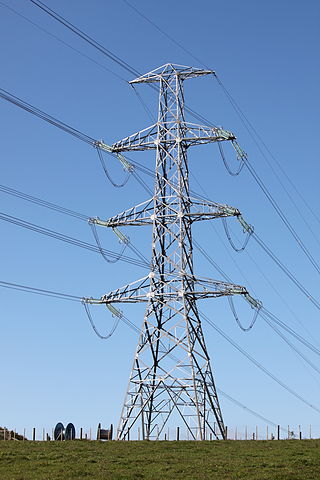
Innovation is the practical implementation of ideas that result in the introduction of new goods or services or improvement in offering goods or services. ISO TC 279 in the standard ISO 56000:2020 defines innovation as "a new or changed entity, realizing or redistributing value". Others have different definitions; a common element in the definitions is a focus on newness, improvement, and spread of ideas or technologies.

Creativity is the ability to form novel and valuable ideas or works using the imagination. Products of creativity may be intangible or a physical object. Creativity may also describe the ability to find new solutions to problems, or new methods of performing a task or reaching a goal. Creativity therefore enables people to solve problems in new or innovative ways.

Consumerism is a social and economic order in which the aspirations of many individuals include the acquisition of goods and services beyond those necessary for survival or traditional displays of status. It emerged in Western Europe before the Industrial Revolution and became widespread around 1900. In economics, consumerism refers to policies that emphasize consumption. It is the consideration that the free choice of consumers should strongly orient the choice by manufacturers of what is produced and how, and therefore orient the economic organization of a society. Consumerism has been criticized by both individuals who choose other ways of participating in the economy and environmentalists concerned about its impact on the planet. Experts often assert that consumerism has physical limits, such as growth imperative and overconsumption, which have larger impacts on the environment. This includes direct effects like overexploitation of natural resources or large amounts of waste from disposable goods and significant effects like climate change. Similarly, some research and criticism focuses on the sociological effects of consumerism, such as reinforcement of class barriers and creation of inequalities.
In economics, capital goods or capital are "those durable produced goods that are in turn used as productive inputs for further production" of goods and services. A typical example is the machinery used in a factory. At the macroeconomic level, "the nation's capital stock includes buildings, equipment, software, and inventories during a given year."
Creative problem-solving (CPS) is the mental process of searching for an original and previously unknown solution to a problem. To qualify, the solution must be novel and reached independently. The creative problem-solving process was originally developed by Alex Osborn and Sid Parnes. Creative problem solving (CPS) is a way of using creativity to develop new ideas and solutions to problems. The process is based on separating divergent and convergent thinking styles, so that one can focus their mind on creating at the first stage, and then evaluating at the second stage.
The creative industries refers to a range of economic activities which are concerned with the generation or exploitation of knowledge and information. They may variously also be referred to as the cultural industries or the creative economy, and most recently they have been denominated as the Orange Economy in Latin America and the Caribbean.
Creativity techniques are methods that encourage creative actions, whether in the arts or sciences. They focus on a variety of aspects of creativity, including techniques for idea generation and divergent thinking, methods of re-framing problems, changes in the affective environment and so on. They can be used as part of problem solving, artistic expression, or therapy.
Product design is the process of creating new products for sale businesses to its customers. It involves the generation and development of ideas through a systematic process that leads to the creation of innovative products. Thus, it is a major aspect of new product development.
User innovation refers to innovation by intermediate users or consumer users, rather than by suppliers. This is a concept closely aligned to co-design and co-creation, and has been proven to result in more innovative solutions than traditional consultation methodologies.
FedEx furniture is the artistic creation of computer programmer and creative consumer Jose Avila, III. In June 2005, Avila created a website, Fedexfurniture.com, to display photographs of a couch, bed, dining room table, and desk that he had constructed out of cartons obtained from overnight shipping giant FedEx Corporation (FedEx). FedEx attorneys used the takedown provisions of the Digital Millennium Copyright Act (DMCA) to force Avila's ISP to take the site offline, accusing Avila of infringing on FedEx's copyrights and trademarks, breaching his contract with FedEx by using the cartons for purposes other than shipping, and potentially misleading consumers into believing that FedEx approved or endorsed Avila's actions. Among attorneys and activist organizations concerned with the exercise of First Amendment rights on the Internet, FedEx's actions raised questions about the constitutionality of using the DMCA to censor unwanted speech. The Fedexfurniture.com website is down as of July 8, 2017.
The Adelphi Charter on Creativity, Innovation and Intellectual Property is the result of a project commissioned by the Royal Society for the encouragement of Arts, Manufactures & Commerce, London, England, and is intended as a positive statement of what good intellectual property policy is. The Charter was issued in 2004.

Electric power is the rate of transfer of electrical energy within a circuit. Its SI unit is the watt, the general unit of power, defined as one joule per second. Standard prefixes apply to watts as with other SI units: thousands, millions and billions of watts are called kilowatts, megawatts and gigawatts respectively.
Lead user is a term developed by American economist Eric von Hippel.
Marketing effectiveness is the measure of how effective a given marketer's go to market strategy is toward meeting the goal of maximizing their spending to achieve positive results in both the short- and long-term. It is also related to marketing ROI and return on marketing investment (ROMI). In today's competitive business environment, effective marketing strategies play a pivotal role in promoting products or services to target audiences. The advent of digital platforms has further intensified competition among businesses, making it imperative for companies to employ innovative and impactful marketing techniques. This essay examines how various types of advertising methods can be utilized effectively to reach out to potential consumers
In marketing, a company’s value proposition is the full mix of benefits or economic value which it promises to deliver to the current and future customers who will buy their products and/or services. It is part of a company's overall marketing strategy which differentiates its brand and fully positions it in the market. A value proposition can apply to an entire organization, parts thereof, customer accounts, or products and services.

Remix: Making Art and Commerce Thrive in the Hybrid Economy is Lawrence Lessig's fifth book. The book was made available for free download and remixing under the CC BY-NC Creative Commons license via Bloomsbury Academic. It is still available via the Internet Archive. It details a hypothesis about the societal effect of the Internet, and how this will affect production and consumption of popular culture to a "remix culture".
Fossil Fuel Beta (FFß) measures the percent change in excess (market-adjusted) stock returns for every 1 percent increase in fossil fuel prices. For example, if a company has an FFß of –0.20, then a 1 percent increase in fossil fuel prices should produce, on average, a 0.2% decline in the firm's stock price over and above the impact arising from fossil fuel price swing on the stock market as a whole.

The cultural consumer describes a person who avidly consumes art, books, music, and live cultural events within a society. With the rise of expressive technologies, cultural consumers have harnessed the Internet to fuel their own creative efforts. The term was coined by author Patricia Martin in her book, The Rise of the Cultural Consumer and What It Means For Your Business, in which she suggests that the convergence of art, technology and entertainment is remaking the American consumer.
Innovation leadership is a philosophy and technique that combines different leadership styles to influence employees to produce creative ideas, products, and services. The key role in the practice of innovation leadership is the innovation leader. Dr. David Gliddon (2006) developed the competency model of innovation leaders and established the concept of innovation leadership at Penn State University.

In electrical engineering, the passive sign convention (PSC) is a sign convention or arbitrary standard rule adopted universally by the electrical engineering community for defining the sign of electric power in an electric circuit. The convention defines electric power flowing out of the circuit into an electrical component as positive, and power flowing into the circuit out of a component as negative. So a passive component which consumes power, such as an appliance or light bulb, will have positive power dissipation, while an active component, a source of power such as an electric generator or battery, will have negative power dissipation. This is the standard definition of power in electric circuits; it is used for example in computer circuit simulation programs such as SPICE.






